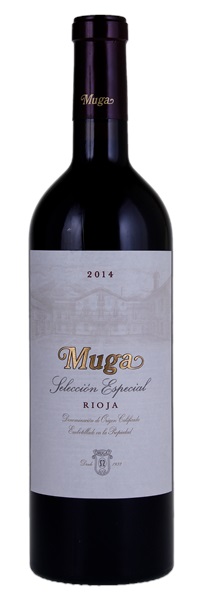Estimate

Vibrant, spice- and mineral-tinged scents of fresh dark fruits and spicecake are complemented by a suave floral overtone. Juicy and pliant in the mouth, offering gently sweet black raspberry, cherry-cola, spicecake and rose pastille flavors that deepen steadily on the back half. In an energetic style, showing excellent clarity and silky tannins that frame an impressively long, focused finish.
...loads of black fruits, charcoal, lead pencil, and espresso aromas and flavors, it's medium to full-bodied, has slightly more acidity...as well as more tannin. It's a balanced, pure, beautiful expression of Rioja.
A dense texture carries ripe flavors of blackberry, currant, licorice and toast in this modern-style red. Bright acidity and firm, slightly grippy tannins keep this focused.